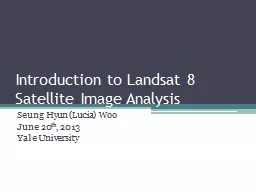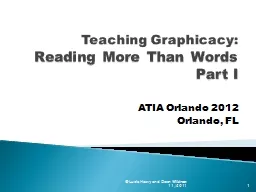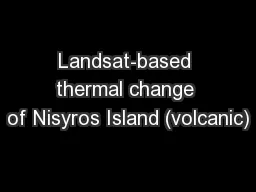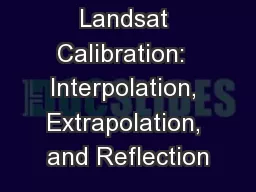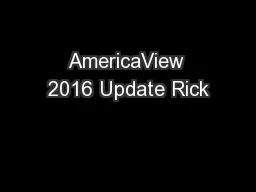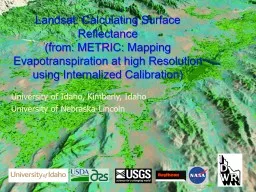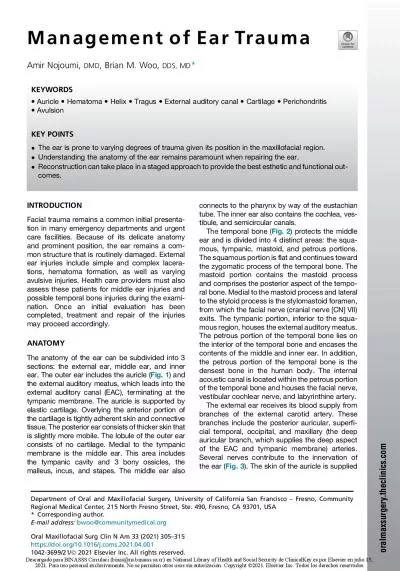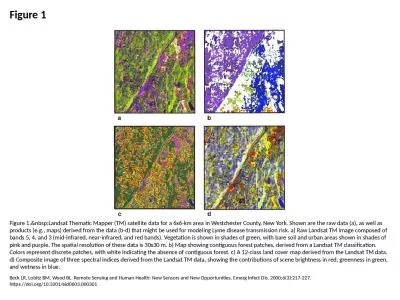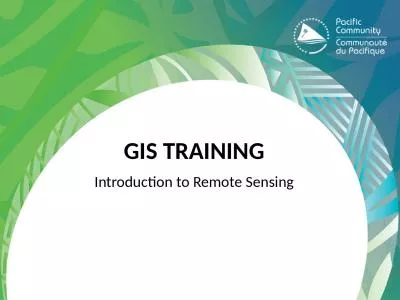PPT-Introduction to Landsat 8 Satellite Image Analysis Seung Hyun (Lucia) Woo
Author : tatyana-admore | Published Date : 2019-11-05
Introduction to Landsat 8 Satellite Image Analysis Seung Hyun Lucia Woo June 20 th 2013 Yale University Outline Negative Reflectance Greater than 1 Reflectance
Presentation Embed Code
Download Presentation
Download Presentation The PPT/PDF document "Introduction to Landsat 8 Satellite Imag..." is the property of its rightful owner. Permission is granted to download and print the materials on this website for personal, non-commercial use only, and to display it on your personal computer provided you do not modify the materials and that you retain all copyright notices contained in the materials. By downloading content from our website, you accept the terms of this agreement.
Introduction to Landsat 8 Satellite Image Analysis Seung Hyun (Lucia) Woo: Transcript
Download Rules Of Document
"Introduction to Landsat 8 Satellite Image Analysis Seung Hyun (Lucia) Woo"The content belongs to its owner. You may download and print it for personal use, without modification, and keep all copyright notices. By downloading, you agree to these terms.
Related Documents

